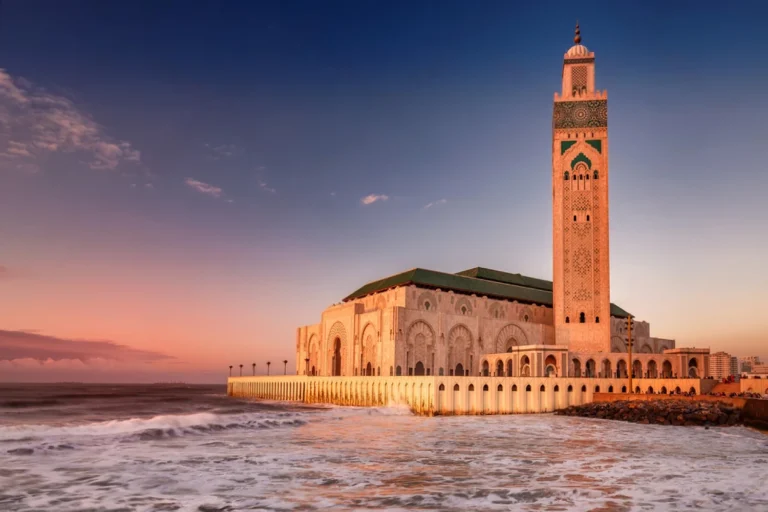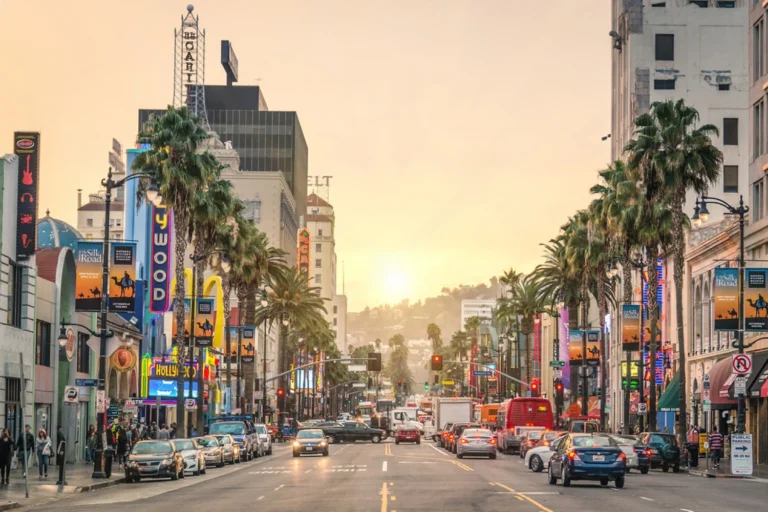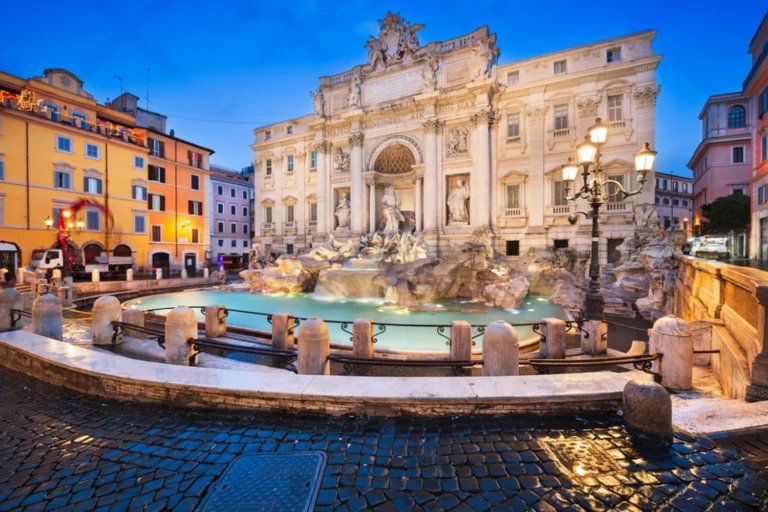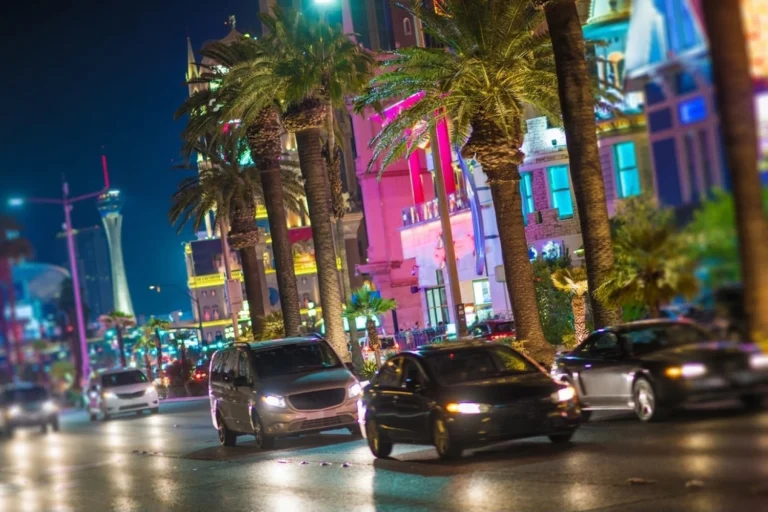Switzerland: 30 Unusual Facts That Break the Alpine Stereotype
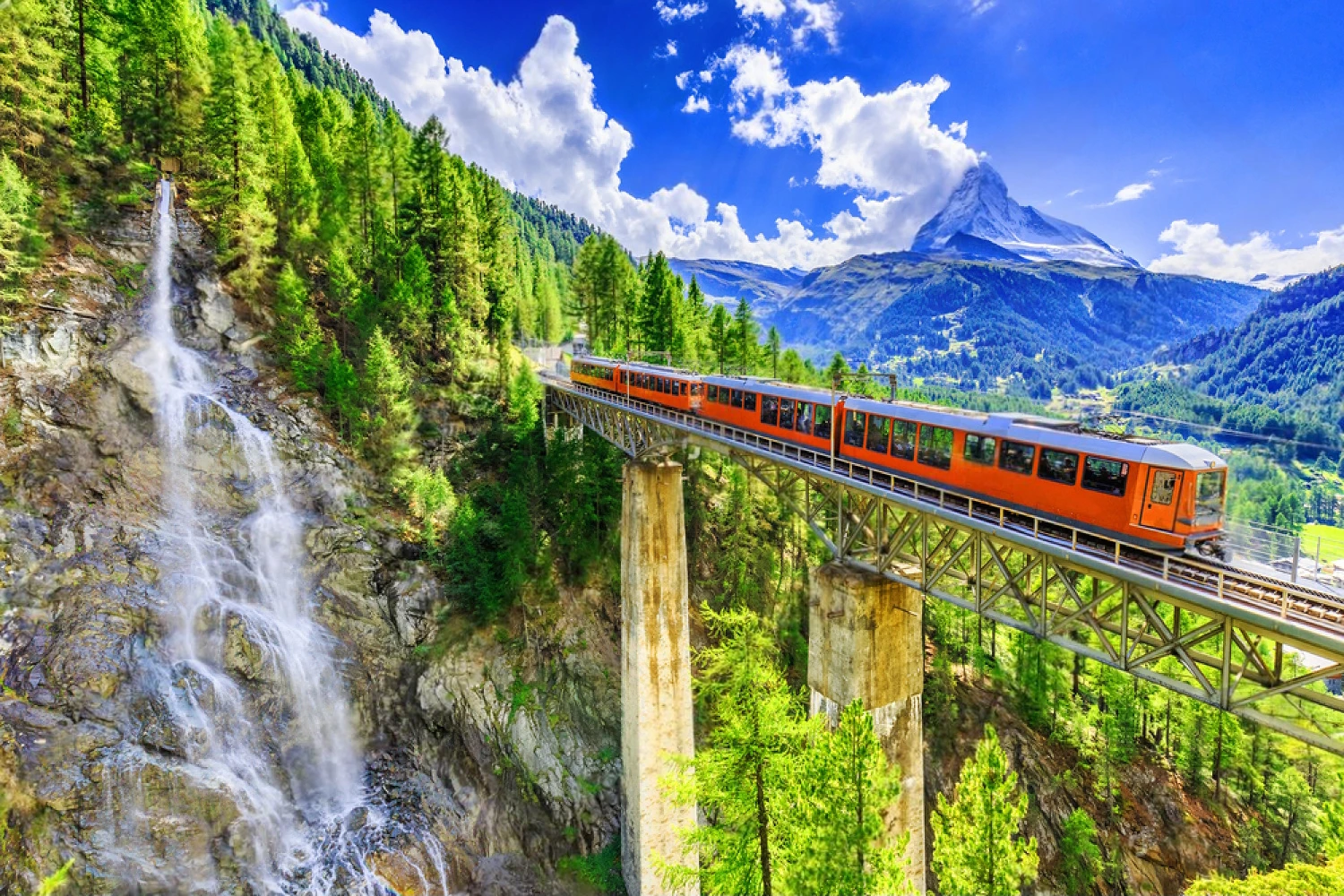
Switzerland greets you in the hush after rain, when cobbles are dark, a bakery window fogs with warmth, and the air tastes faintly of butter and wood smoke. Walking slowly, you catch the far ring of a bell, fingertips on cool stone, and conversations that soften as you pass. It feels like turning a smooth stone in a clear stream to find the delicate patterns you almost missed. These quiet, human sized moments open hidden stories and overlooked details, the deeper spirit that stays with you long after you move on.
Four tongues on a single ticket
It felt like the train kept changing the radio station while the mountains stayed steady outside the window. The announcements shifted, soft German rounding into French, then opening to the buttery warmth of Italian, all while the air smelled faintly of coffee and cold metal rails. My ears adjusted like eyes moving from shade to sun, surprised at how quickly the rhythm of speech could change without the landscape blinking.
In Switzerland, there are four official languages German, French, Italian, and Romansh and sometimes it takes only minutes to cross from one to the next. I remember the quiet delight of hearing bonjour become buongiorno before my tea even cooled, and the shy lilt of Romansh slipping in like a secret kept by the hills. The signs didn’t argue; they simply offered options, as if kindness had learned different spellings.
What stayed with me was the feeling that belonging can be plural, that one place can hum with many voices and still sound like home. One ticket, four ways to say hello, and the same melody played by different instruments proof that borders can be soft, and that a country can be fluent in welcoming.
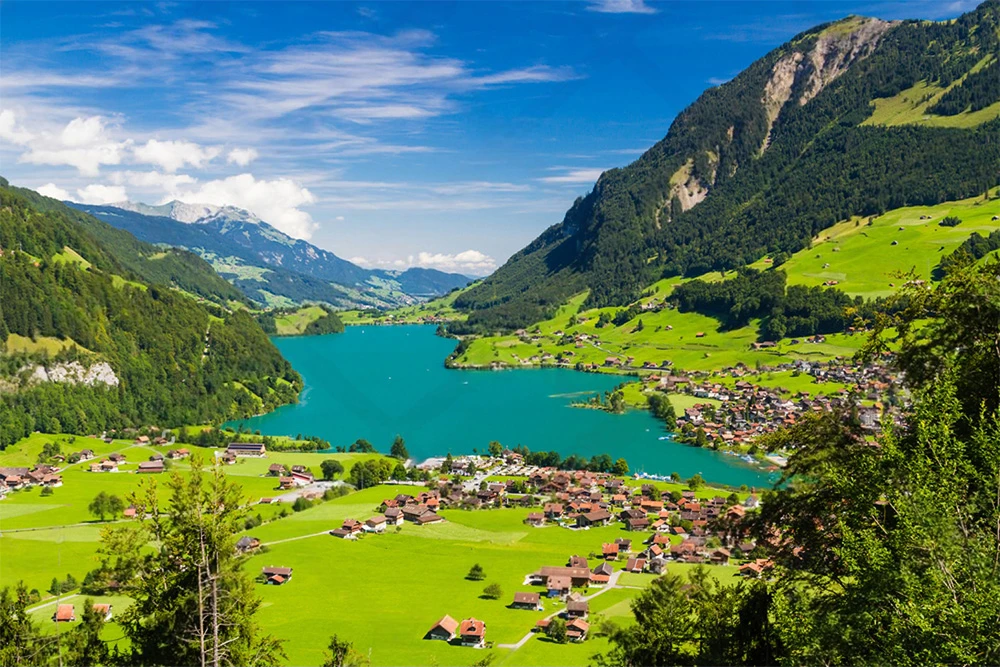
Cows crowned like queens for a day
I didn’t expect a parade to feel so tender. Then the first cow turned the corner, flowers woven across her brow and a bell so big it sounded like a bronze heartbeat. The air had that crisp apple snap of autumn, and people leaned in as if greeting old friends. That’s the herdsman’s descent summer pastures behind them, the animals taking the streets as calmly as royalty.
I remember the way the crowd softened, faces bright with pride, kids shushing each other to hear the bells. For a moment, work and weather and all the small worries seemed to lift; the town was thanking these quiet, patient workers for carrying a season on their backs. In Appenzell, they’re heroes for a day, and it feels right a small ceremony that says we made it through. It’s the rhythm of the place made visible, the year’s pulse rolling by in flowers and sound.
The Swiss keep their wine close, and views closer.
It always surprises me that the best souvenirs won’t fit in a suitcase: only about one percent of Swiss wine ever leaves the country. The rest stays home, poured for neighbors, birthdays, and the kind of slow evenings that don’t need a reason. It feels less about scarcity and more about tenderness people keeping what’s precious close, not to hide it, but to share it properly.
Out on the terraced slopes of Lavaux, the idea makes perfect sense. The hillsides are stitched into patient green steps; at golden hour the light softens, the lake below turns hazy silver, and the air smells of warm stone and late summer grapes. Few visitors wander between the little villages then, so a glass of the pale local white tastes like liquid sunlight and everything slows into a hush, the kind that makes you want to linger and let the moment breathe.
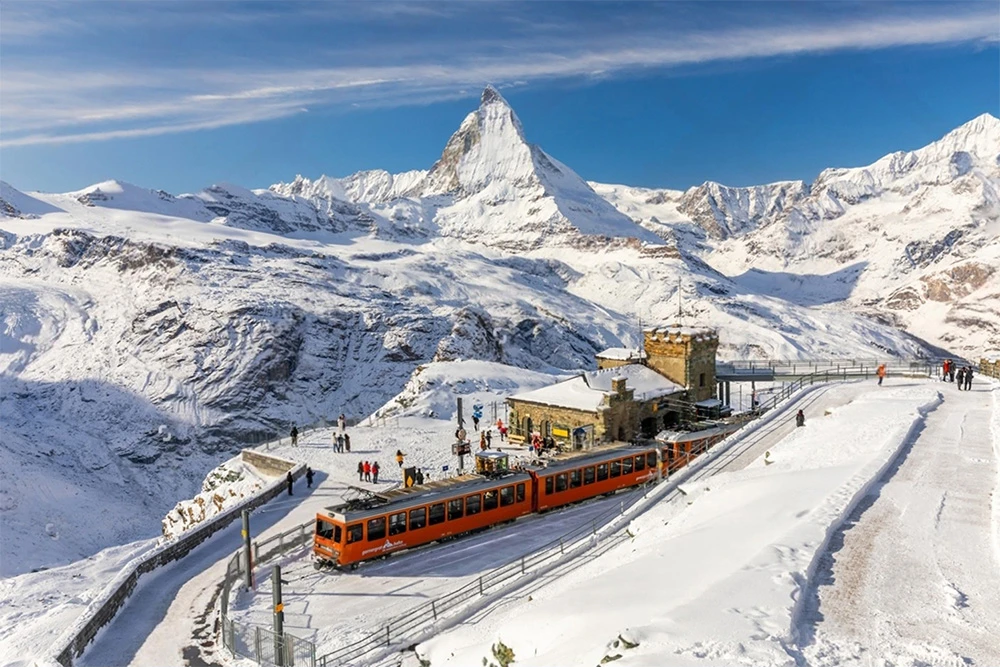
Alpine snow, palm shade: one day, two seasons.
I still smile at how my fingers stung from cold air and, not long after, smelled of lemon peel and sea salty olives. Up high the snow was a white hush, bright enough to make you squint; down in Ticino the breeze carried a whisper of rosemary, and glasses clinked in the kind of sunlight that rests on your shoulder like a friendly hand. It felt like changing the station on a radio winter fading to summer with one small turn.
What surprised me most wasn’t the novelty, but the gentleness of it all: mountains keeping their cool dignity while the valleys loosened their collar. The day taught me that borders are softer than maps suggest, and that happiness can be as simple as two seasons sharing the same table cold still tingling in your cheeks while citrus warms the throat. I remember thinking, if a place can hold both at once, maybe we can too.
Fountains you can drink from, and lakes everywhere
I still grin remembering a rush hour pause when a woman in heels leaned to a stone fountain, took a sip, and kept walking like it was the most ordinary grace. The water was shockingly cold and clean, the kind that leaves no afterthought on your tongue, just a quiet clarity. You hear it before you see it the steady hush of the spout and realize these fountains aren’t props; they’re trusted neighbors.
More than 1,500 lakes stitch the landscape like scattered mirrors, and the fountains feel like their urban cousins, carrying the same clear promise. In Switzerland, people have been drinking straight from these basins since the days when medieval trade routes braided through the valleys, when a good public source could mean safety, welcome, and a night’s rest. That lineage lingers; you can sense the pride in the way locals fill a bottle on their way to work, pride that flows steadier than the spouts themselves.
I love how simple the ritual is, and yet how much it says: care for the water, and it cares for you. In a world that often wraps basic things in suspicion, this feels like trust you can taste a small sip that tells you you’re in good hands.

The only underground lake open to visitors on Earth
I still remember the hush that gathered the moment light slipped across the water. It wasn’t darkness exactly, more a soft green glow that made everyone breathe slower, like the air itself wanted to be gentle.
There’s a lake, entirely underground and open to visitors – St Léonard beneath the Alps – and the small boat seems to drift through air because the water is so clear. The stone ceiling catches the lantern glow in wavering patterns, and in those shifting greens you sense a whole quiet world that never sees daylight: patient, delicate, and oddly tender, the kind of place fairy tales promise and geology delivers.
What struck me most was how calm can feel like a secret worth protecting. I remember whispering without meaning to, not out of fear, just respect. Walking back into day, the mountains looked the same, but I felt different – reminded that beneath all that grandeur, the earth keeps rooms of wonder where time moves softly and awe has space to breathe.
In Switzerland, Three Late Minutes Make Headlines
I remember waiting on a quiet platform, the cup warm in my hands, the air tasting faintly of metal and morning. The red second hand on the station clock paused for a breath, then the train slid in exactly as promised. Once, the minute ticked past, then another, and a gentle murmur lifted from the crowd; over the speakers came a formal apology, unhurried and sincere, for being more than three minutes late. Later, it even made the evening news, tucked between weather and sports, as if time itself had a place on the broadcast.
It sounds strict, but it feels tender, almost like a civic heartbeat steady, dependable, shared. In Zurich, that tiny apology says your minutes matter, that the day won’t steal what you planned to give it. There’s beauty in that care: time handled like a clear mountain stream, no splash wasted, just a quiet respect for how we move through it together. I still smile when a train arrives on the dot, not because it’s novel, but because it feels like being looked after.

An underground seat for every Swiss, just in case
I remember how quietly the idea landed: in Switzerland, everyone has a spot in a fallout shelter. It felt surreal and oddly tender, like being handed a spare key you hope you’ll never need. I could almost sense the cool dryness of concrete and that faint metallic tang, while above ground the morning went on with clinking cups and tidy sunlight.
A friend explained that new buildings are required to include bunkers, not as a curiosity but as part of the blueprint, like stairwells or storage. Because of that, they say the entire population could theoretically be sheltered underground rows of bunks, simple doors, labels where names would go, a calm kind of readiness that doesn’t make a fuss.
What stays with me is the feeling behind it: not fear, but care. There’s a strange comfort in knowing safety is planned as meticulously as train timetables, that no one is left off the list. It reveals a quiet promise at the heart of the place preparedness as a form of kindness, a steady hand on your shoulder when the sky looks uncertain.
Where bears lounge by an emerald river
I didn’t expect to feel so calm watching a bear yawn by the water. Here in Bern, the city’s public bears wander a green slope above the river, then flop into warm bands of light like heavy brown commas that slow the day. The air smells of wet leaves and clean stone; every so often a cub pratfalls after a twig, and a ripple of soft laughter rolls along the railing.
There’s an old tale that the Swiss capital was named for the first bear its founder met, and standing there it feels less like legend than a promise kept. I remember thinking how tender it is for a city to choose a neighbor like this furred, unhurried, and utterly itself as its emblem. Maybe that’s the secret of the place: the river moves steady, the bears lounge and play, and you can’t help matching your heartbeat to that quiet, good natured rhythm.
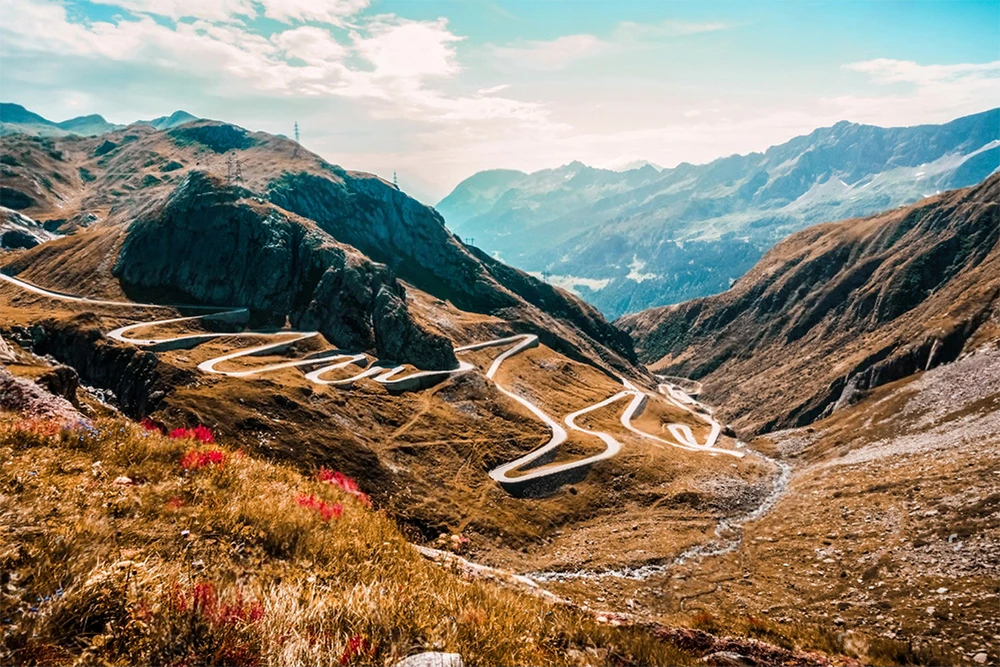
A country where footpaths outnumber the paved roads
I still grin at the thought that there are more trails than roads here, as if the land politely insisted we slow down. In Switzerland, the air smells of pine and stone after rain, cowbells ring somewhere just out of sight, and footpaths stitch across meadows, past waterfalls and old timber hamlets, like quiet seams holding the mountains together. Once, I turned a corner and felt the faint tremor of a suspension bridge under my soles, a reminder that some beauty only shows itself when you meet it halfway.
The funny truth is you can’t “see it all” unless you walk, and that feels exactly right. People seem perfectly at ease with the pace shoulders looser, conversations softer, time stretching like a sunny afternoon. On these paths, you don’t conquer a place; you learn its rhythm. It’s like a book that only opens when you trace the lines with your fingertips, each step a sentence, each view a patient reply.
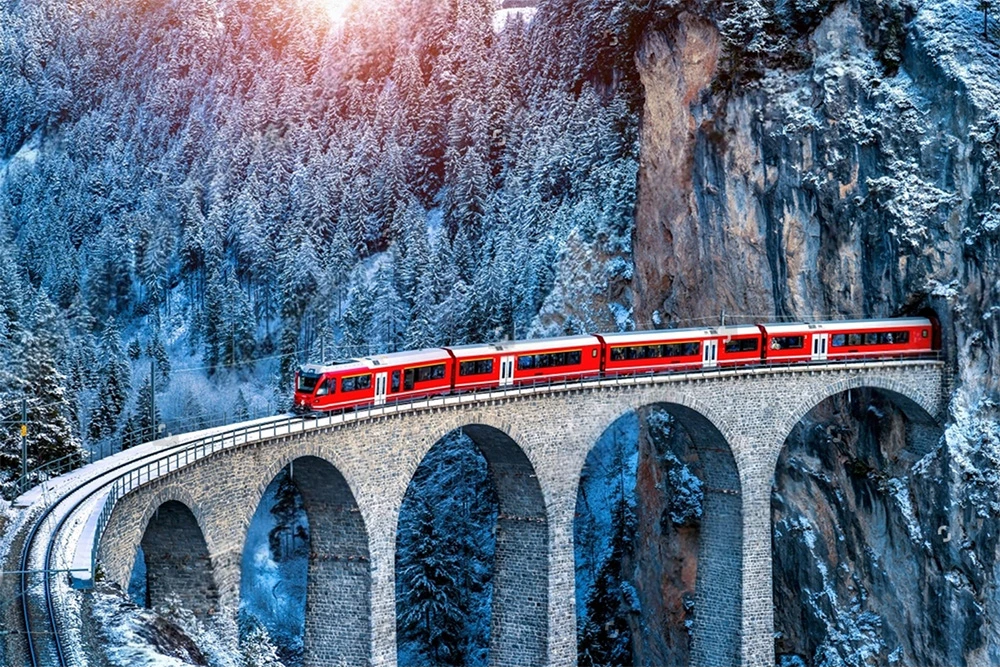
A secret turquoise lake above the world
I remember the first glimpse stealing my words: a turquoise basin suddenly appearing, circled by snowy peaks. It’s tucked so neatly into the mountains that it makes you earn it either a steady climb or a gondola humming over the pines and somewhere along the way the mind goes quiet.
At sunrise, the air tastes like cold stone and pine, and the water lies still, like melted glacier glass. The peaks catch a faint blush, the light moves carefully, and you realize the mountaintop view might be yours alone, at least for a breath or two.
Oeschinensee feels like a secret kept not out of stinginess but kindness; it hides just enough to slow you down. Standing there, I felt small in the best way, the day holding its breath long enough for me to catch mine.
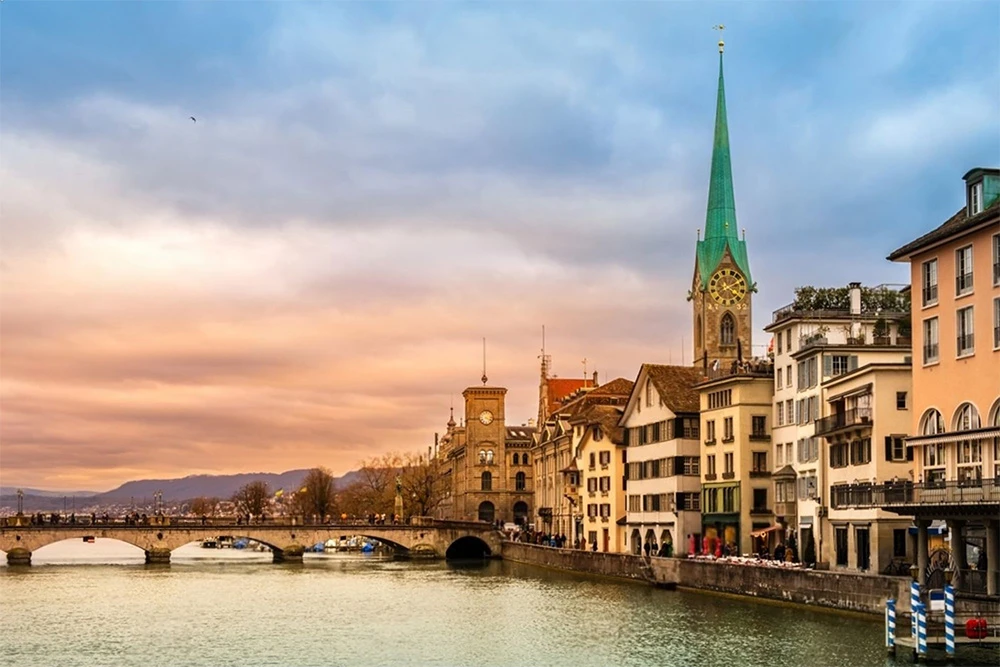
Cows Use Traffic Tunnels Beneath Swiss Mountain Roads
I still smile at the memory of standing by a meadow and hearing a ribbon of bells rise from below the asphalt, as if the hillside were humming under its breath. It took a second to realize the herd wasn’t on the road at all they were gliding through their own tunnel, the air cool and hay scented, hooves tapping softly like a secret brook beneath the traffic.
There’s something quietly beautiful about that choice: building passages so the cows can keep their seasonal wanderings without tangling with cars. In the Swiss Alps, it feels like a small oath that practicality doesn’t have to be hard edged equal parts efficient and kind. I remember thinking how tender it is when a country plans for the rhythm of bells, not just the rhythm of engines, and how that gentleness lingers with you long after the mountains fade from the window.
Where quiet greetings carry the loudest respect
I remember expecting bright hellos and big gestures, and instead finding a hush that felt like a warm scarf. The greeting was simple: a small, steady handshake and a clear, calm look in the eyes, nothing more. No performance, just presence. At first I mistook it for distance, but it was care discretion and humility wrapped into everyday manners, the kind that leave space for everyone to breathe.
Even the streets seemed to agree. Trams slid by with a soft sigh; people moved in navy, charcoal, and winter cream, the city a quiet orchestra without a soloist. In Zurich, belonging isn’t declared it’s implied. When everyone dresses somewhat the same, it isn’t about hiding; it’s about consideration, a gentle promise not to shout over the room.
It taught me to soften my edges: to meet a gaze steadily, to let the handshake speak, to bring my voice down to the gentle volume of trust. There’s something beautiful in that collective restraint, the way respect appears not in grand gestures but in small, precise notes. You end up feeling seen, not for how brightly you shine, but for how calmly you stand.
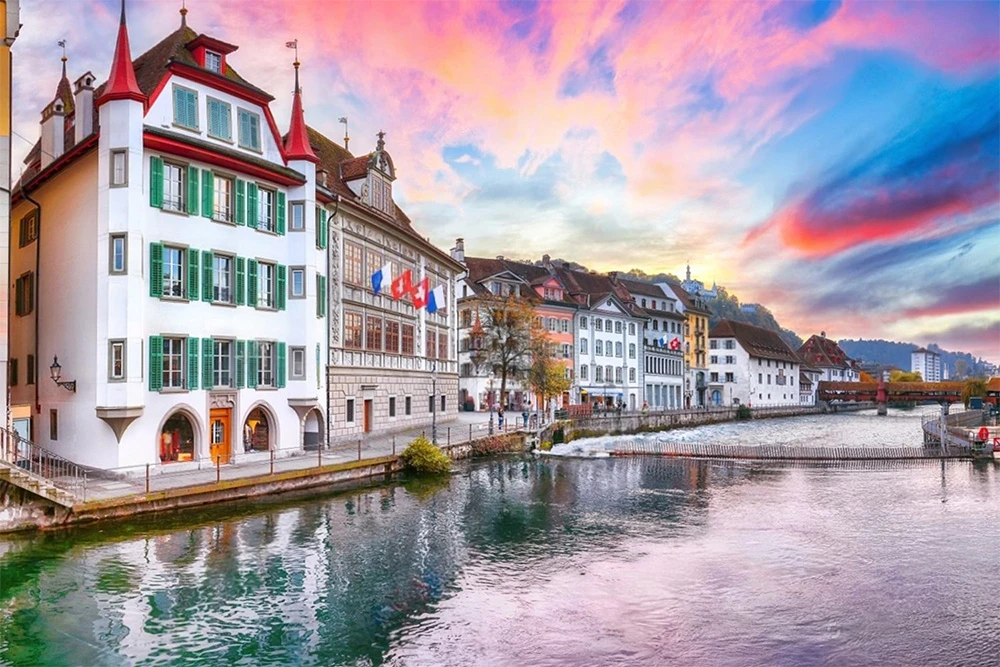
A rare square flag that fits Switzerland perfectly
I remember looking up on a breezy afternoon and doing a little double‑take. The flag above the old arcades wasn’t the usual rectangle just a red square with a white cross, edges so sure they seemed to steady the air. Only two countries fly a square flag, I learned, and somehow it felt right that Switzerland would choose the uncommon shape without any fuss, like a friend who knows their style and doesn’t need to explain it.
In Bern, the square reads less like a quirk and more like a quiet promise: balanced, measured, nothing wasted. It echoes the way a clock chimes cleanly on the hour and how even the chocolate breaks into neat little squares. That tidy red stamp on the sky small, confident doesn’t try to impress; it simply holds its form so well that you notice, and the day feels a touch more orderly, a touch more at peace.
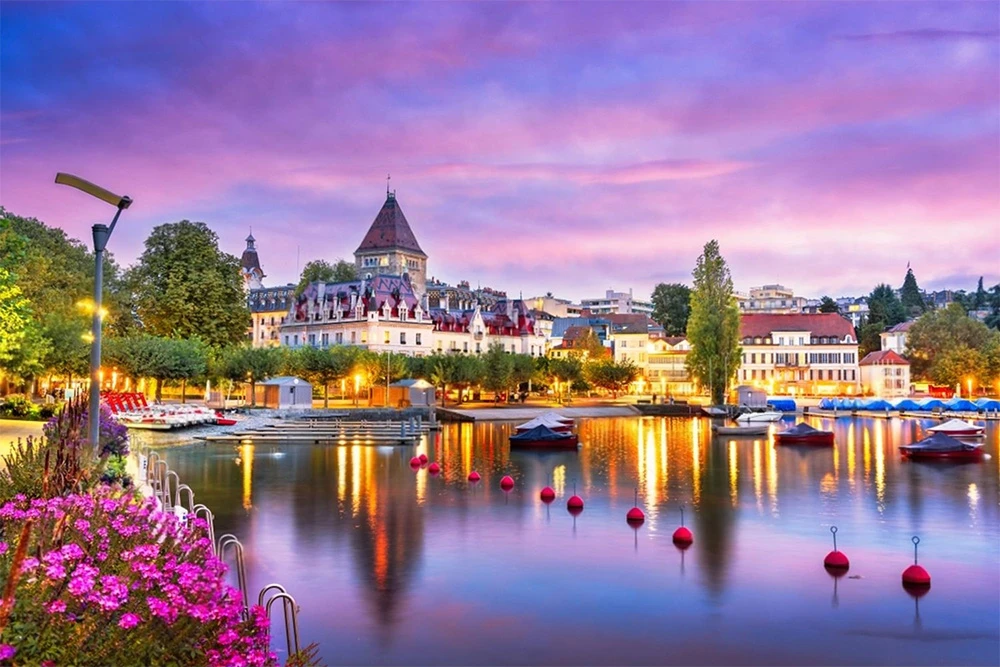
Timeless village stories painted into hand shaped country clay
I didn’t expect to be moved by a bowl. The clay felt cool and slightly grainy, and the glaze caught the light like wet meadow grass. Tiny cows, wheat stalks, and a shy rooster circled the rim, the sort of scenes grandparents might have told at the table. In family workshops around Bern, hands still steady the wheel the way they did generations ago.
They call it Bernese peasant ceramics, formed and painted in family run potteries, each piece echoing rural life from centuries past. I remember the kiln’s dry heat, the air tasting faintly of clay and woodsmoke, and the patient brushwork that gives a cow its gentle blink. It’s funny these humble plates and pitchers have become a collector’s dream, yet their charm is still the same: honest, sturdy, quietly proud.
What stays with me is how these pieces carry the spirit of Swiss folk artistry without fuss, built on the rhythm of seasons and kitchen tables. It feels like time has been tucked into the glaze. Take one home and the room softens a little; everything seems steadier, somehow.
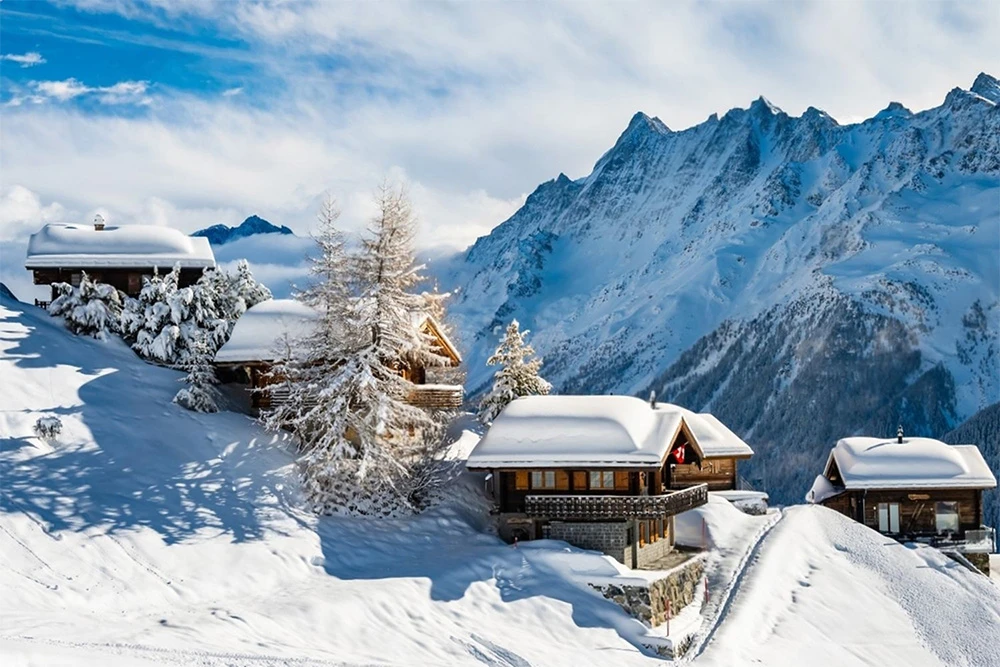
The world’s longest staircase clings to a mountain
I laughed when I heard the number-11,674 steps. Then I saw the staircase itself, threading upward beside the funicular like a slender spine, and my calves twinged in sympathy. On Mount Niesen in the Bernese Oberland, it keeps pace with the train and disappears into the high light; the air smells of pine and cold stone, and you can hear cowbells somewhere below.
Only once a year they open it for a race, when daredevils trade breath for altitude and the mountain measures their patience one riser at a time. I remember watching the carriage glide past and feeling oddly comforted that most days those steps simply rest there, patient and precise beside the easy ride. That mix feels deeply Swiss order sitting right next to daring and it made me think about how progress often comes the same way: steady, counted, and somehow still full of wonder.
Where trains carry cheese and time worn secrets
I still smile at the memory of a festival train where one carriage smelled of toasted nuts and sweet hay; the sign simply said “fromage.” Strangers leaned together over small paper plates, comparing the bite of Gruyère to the mellow hush of Emmental, while the faint ring of cowbells seemed to float in at the stops. It felt casually generous, the way a neighbor might hand you a slice and say, “Here, try this.”
That’s the charm: in Switzerland, Emmental and Gruyère aren’t just names, they’re family stories. The recipes are passed down quietly, like bedtime lullabies you never forget, and you can taste that patience in every slice nutty, grassy, with a slow, buttery finish that lingers. I remember thinking how rare it is for something so simple to carry so much memory.
The idea of a “cheese compartment” still makes me grin, and yet it makes perfect sense. This is a place that lets tradition ride along with you, turning an ordinary journey into a small celebration. Watching hills roll by and lakes catch the light, I felt that warm, steady joy of being welcomed into what a country loves most offered on a paper plate, somewhere between stations.
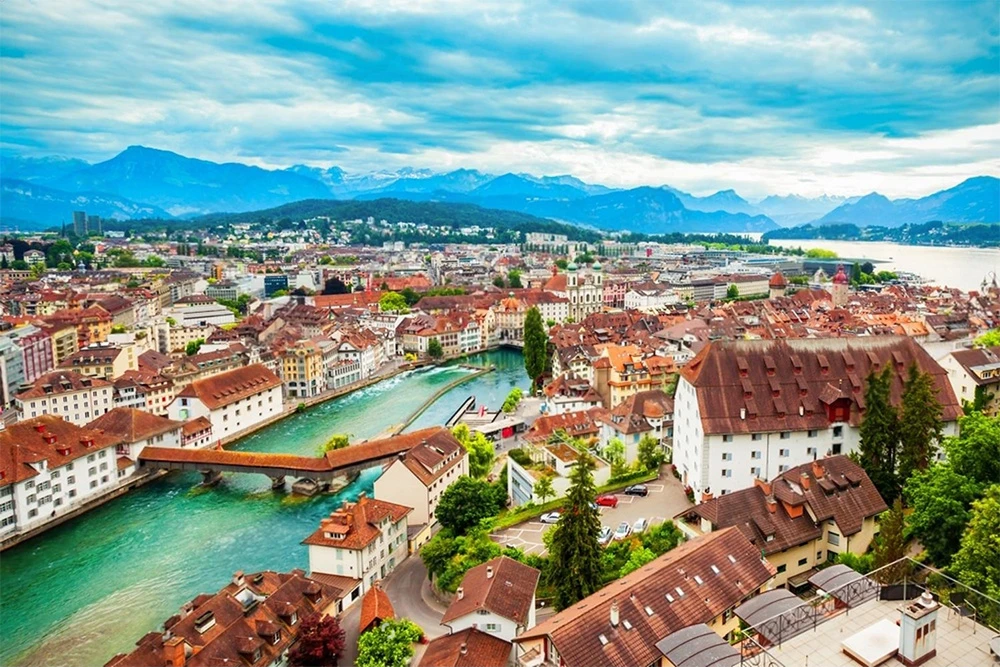
Yodels that carry pride across the Alps
I didn’t expect the first note to travel so far. It rose into the clear evening and came back a beat later, shaped by rock and snow. Cowbells ticked beyond the square, the air smelled of pine and wood smoke, and pride was easy to read on faces from aproned grandmothers to teenagers in bright vests.
In Appenzell, I learned yodeling isn’t a postcard joke; it’s a yearly promise the villages keep. At the festivals, voices rise not to impress but to reach across meadows, over roofs, toward the darkening ridges each one a thread stitching the hills together. Some calls are meant for a neighbor milking late, some for the peaks themselves, and when the echo returns, the crowd falls quiet, as if the mountains leaned in like old friends. It’s simple and generous, and it leaves you feeling the place is speaking in a language anyone can understand.
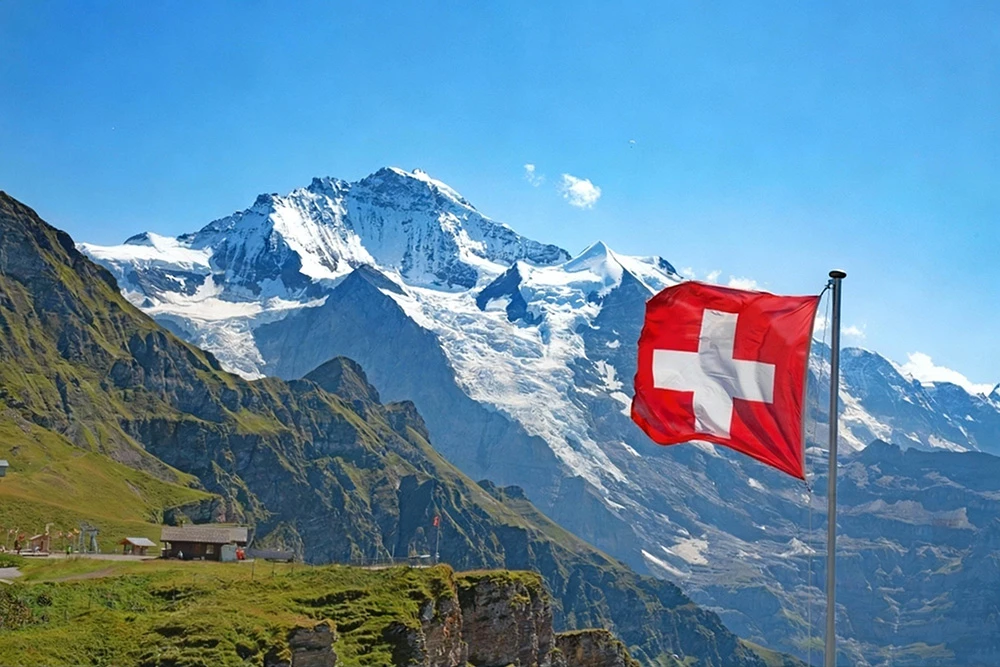
A wooden horn that still calls hearts home
Just before the sun slid behind the peaks, a long, low note unfurled across the grass. I remember turning without thinking, as if someone had softly said my name. Some evenings in the Swiss Alps, that voice belongs to the alphorn – a nearly four meter length of pale wood resting easy in the meadow, the air around it smelling of hay and cool stone.
It once called cows home, steady and sure when light thinned and hills blurred into each other. Now those mournful notes drift at sunset and you can feel something old breathe again inside you. There’s a tenderness to it – not a show, just sound carrying through open space, reminding you that belonging can be as simple as answering a familiar call.
I love how a tool for chores became a quiet ritual. The breeze lifts, a bell clinks far off, and that wooden voice rolls in unhurried waves; it feels like the mountain exhaling. For a moment, time loosens its grip, and you stand there believing that a single note can guide more than cattle home.
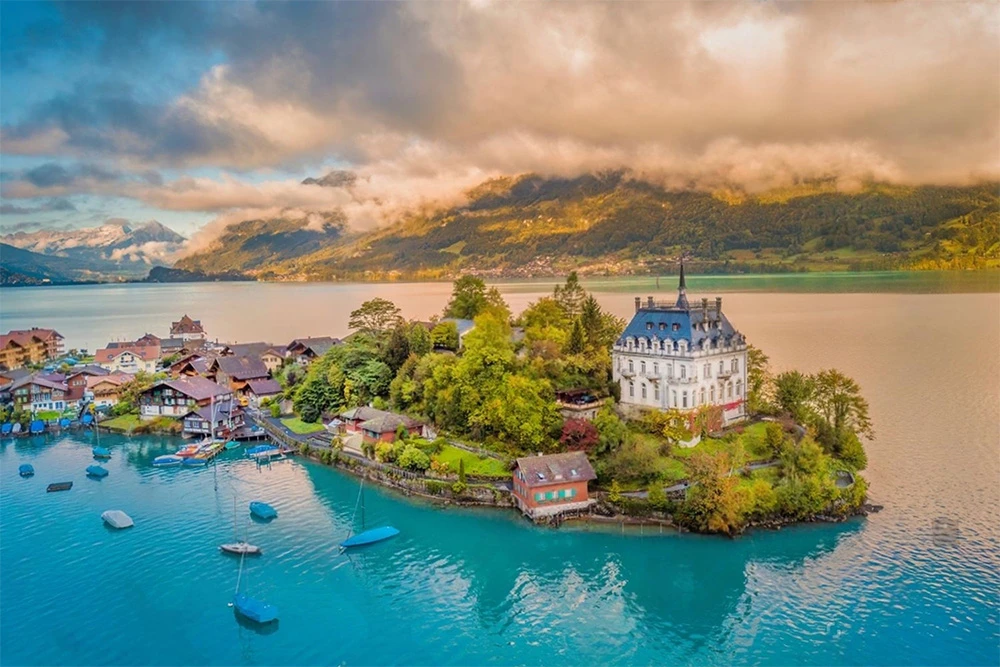
Candle lit races on Switzerland’s old postal roads
I didn’t expect a race to feel so tender. The night was crisp enough to make our laughter hang like little clouds, and candles winked from a tunnel ahead, smelling faintly of wax and pine. Around me, neighbors compared sturdy sleds like family heirlooms, cheeks bright, bells clinking somewhere down the slope as if the mountain were clearing its throat.
This is the kind of winter tradition that sneaks under your skin toboggans flying along ancient postal routes where horses once carried letters, now lit by flickers and the occasional cheer. On the old road above Bergün, the locals race not for medals but for homemade prizes: a jar of marmalade, a braided loaf, a pair of wool socks knit by someone’s aunt. It’s playful but serious in that Swiss way times chalked up carefully, jokes traded just as carefully.
What stayed with me wasn’t the speed so much as the feeling that the village was moving as one body, a bright ribbon unspooling down the hill. The tunnels felt like brief, glowing heartbeats, and when you burst back into starlight, you remembered that winter can be both brisk and soft. I left thinking that joy here isn’t loud; it’s crafted by hand, shared like bread, and it lasts longer than the snow.
Stories cut from shadow, taught by patient hands
I thought it was lace until the light slid across the table and the black paper breathed meadows, cows, a tiny bridge appearing from a thousand careful cuts. In the Pays d’Enhaut, decoupage turns the everyday into a hush: the soft snip of scissors, the faint papery dust, the way a village scene suddenly glows when you lift it to the window.
What surprised me most is how this craft lives: not in a classroom, but in the quiet orbit of masters who pass it hand to hand. You learn by listening to the rhythm of their breathing, by noticing where they pause before the next cut; patience is the lesson, taught in long, gentle hours. I remember feeling that the paper itself remembered the mountain silence.
Those black filigrees hold centuries of village memory haystacks and church bells, a child waving in a window, a festival passed down like a family recipe. It’s fragile, yes, but that fragility feels honest, the way dusk sharpens every edge: a reminder that even the most delicate lines can carry a place’s whole heart, cut from shadow and stitched into time.

Where mountain paths offer chocolate, no questions asked
I still smile at the memory of a tiny wooden tray of pralines perched on a fence post, a handwritten note that simply said: for hikers. The air was crisp, cows somewhere down the slope clinked their bells, and the breeze carried a shy hint of cocoa. It felt a little mischievous, like a wink from the mountain, this quiet invitation to pause and let something sweet melt into the day.
People say they eat more chocolate per person than anywhere, and in Switzerland that suddenly makes perfect sense. Sweetness here isn’t just a treat; it’s hospitality, a small way of steadying your breath after the climb. Some chocolatiers even leave a square or two out on remote trails, trusting the kindness to keep moving along. I remember the gentle snap, the slow velvet melt, and how that tiny square became a pocket sized hearth against the chill simple proof that generosity can taste like cocoa and feel like warmth.
Oldest open air film nights in a medieval piazza
You know that hush before the first frame? Here it arrives with warm night air, the rustle of palm fronds, and the outline of stone turrets holding the sky in place. The screen glows like a sail in the dark, and the crowd settles into a gentle murmur that feels older than the square itself.
Every summer, Locarno turns its medieval piazza into Europe’s oldest open air film festival, which sounds famous but somehow still feels like a secret. Even friends who plan their holidays around premieres blink when I tell them about it, as if a place this tender and timeless couldn’t have slipped past their radar. I remember the first time the credits rolled and applause bounced off the walls, light and quick, like laughter finding its way home.
Movies feel different here. Your emotions don’t stay tucked in; they drift upward into the night with the smell of popcorn and jasmine, meeting the mountains somewhere beyond the rooftops. It’s cinema and summer braided together, where the grandeur of old stone and the playfulness of palm shade remind you that stories are at their best when the world itself is listening.
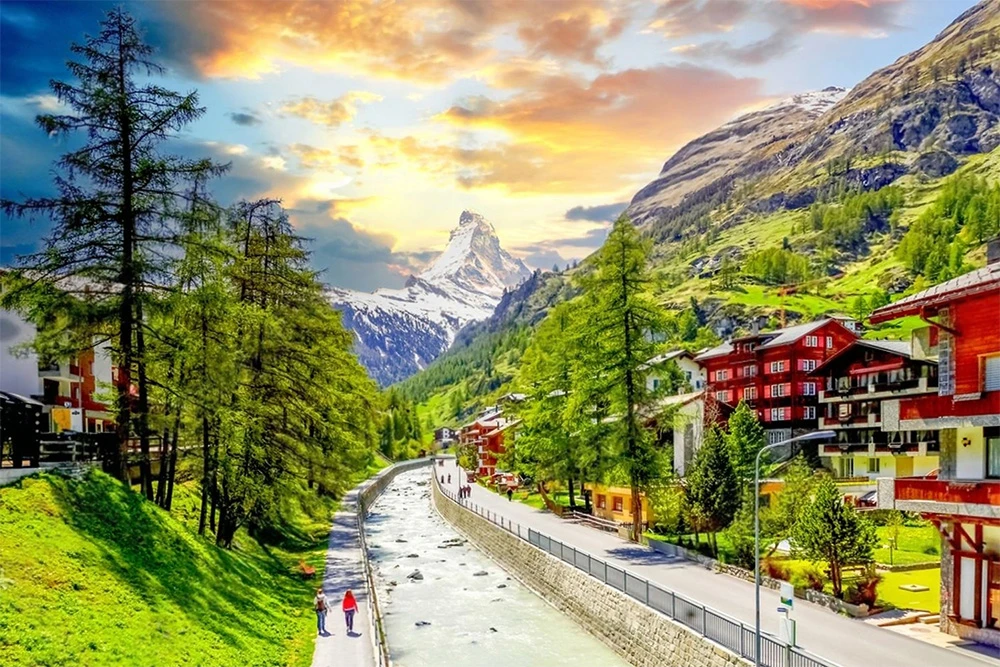
Bungee into Bond lore at Verzasca Dam
Some places make your pulse misbehave. I remember leaning over the Verzasca Dam, that vast sweep of concrete dropping into a ribbon of green, the wind carrying the cool smell of wet stone. They say it’s the world’s highest free standing gravity dam, and standing there, it feels believable like a cliff carved by human patience. The echo of water far below and the quiet on the rim make everything sharper, as if the air itself is urging you to decide what kind of brave you are today.
You can take the same bungee plunge James Bond took in GoldenEye, and I swear even watching someone step out feels like borrowing courage for a moment. In Ticino, where the sun sits warmer on your shoulders, that leap becomes a kind of conversation with yourself: how much trust you can hold, how much fear you can soften. You don’t have to jump to feel it; the dam already lifts you in a different way, proof that humans can build something both mighty and oddly tender. Fear and wonder braid together like the cables, and for a breath, you’re weightless either way.
https://en.wikipedia.org/wiki/Switzerland
Decisions made by raised hands in the square
I remember standing at the edge of a small crowd, the church bells still humming in the air and the smell of fresh bread drifting in from a nearby bakery. In Appenzell, people stepped into the open and lifted their hands together, a hush settling before the moment like a quiet tide. No booths, no screens just faces you might know from the cheese shop or the footpath, choosing in plain daylight.
It felt brave and tender at once. Direct democracy here is literal, almost tactile; your voice lives in your arm, in your neighbor’s gaze, in the clear mountain light. I was struck by the trust in it the way a community says, we see each other, and we’ll carry this choice together. There’s a calm honesty to that, the same patience you feel in the rhythms of the valley, as if decisions are stitched into the fabric of everyday life instead of shouted from far away.
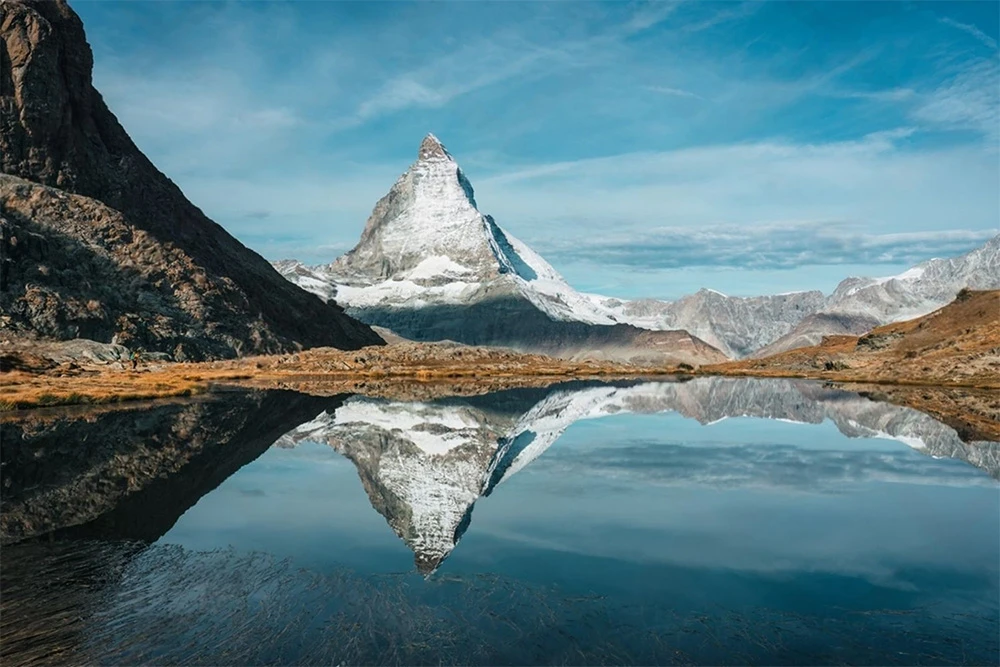
Shattered pots, sweeping blessings at a Swiss doorstep
I didn’t expect celebration to sound like breaking. First came the crack of ceramic on stone, then a scatter of white shards skipping across the stoop like a small thunderstorm held to one doorstep. In a few Swiss cantons, this is how a wedding ends and a marriage begins: laughter mixing with the sharp music of pottery, a little clay dust rising in the night air. Once, in Zurich, I stood nearby as friends grinned through the noise, faces lit by porch light and that giddy, brave feeling new beginnings have.
What I loved most came after the clatter the quiet chorus of brooms. Neighbors drifted over with sleeves rolled up, bristles whispering over the ground, everyone scooping the mess into tidy piles together. It felt like the point wasn’t to smash away bad luck but to promise, out loud and in pieces, “We’ll help you when things break.” I remember thinking how marriage can be private, but happiness here is a quilt stitched by many hands; the sweeping made a gentle vow that the couple wouldn’t be alone when life shatters and needs mending.
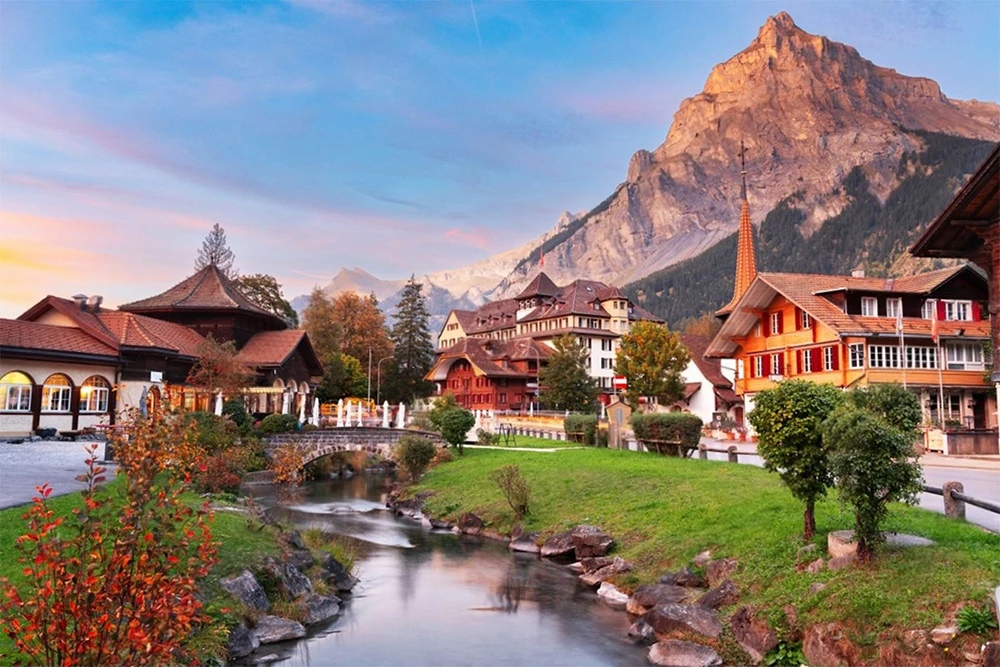
Where neighbors sort trash and quietly sort your conscience.
It’s funny how the clink of glass can be a reminder. One morning in Zurich, the recycling corner looked almost ceremonial paper stacked dry, metal shining, glass waiting by color. I once slipped a bottle into the wrong bin and later found a note, neat and calm, reminding me where it belonged.
Here, sorting waste isn’t just a rule; it’s a shared habit that keeps everything clean and simple. Ignore it and, after a while, the municipality will write to you polite, but firm and somehow that firmness feels caring. What surprised me most was how quickly respect becomes muscle memory: you do it for the lakes you love, and for the neighbor you may never meet. That small, satisfying clink turns into a promise to the city, and to yourself.
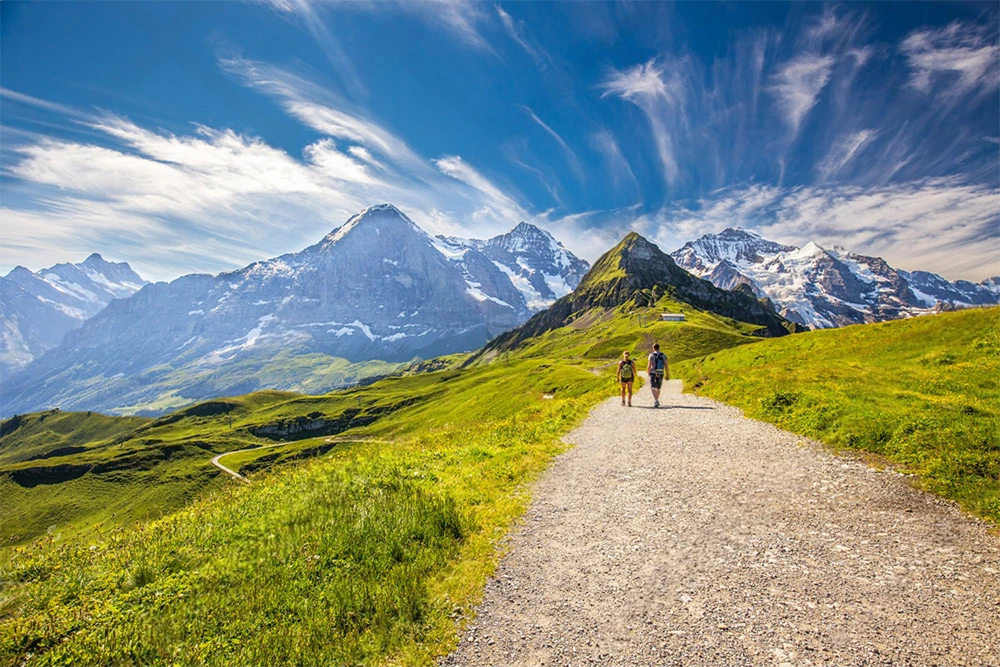
A roaring curtain you can almost touch
I didn’t expect a river to sound like that like a living drum beating straight through my ribs. Standing near Rhine Falls, the air turned cool with mist and there was a soft tremor underfoot. Sunlight kept catching in the spray, flaring into brief rainbows that flickered and vanished before I could even fix their colors in my mind.
What gets me is how wildness can sit so close to everyday life; one moment you’re on a quiet train, the next you’re beside Europe’s largest waterfall, close enough for the mist to settle on your skin. I remember how conversation around me thinned to whispers, not from fear but from awe, as if everyone shared the same secret: that enormity doesn’t have to be harsh. It felt less like a landmark and more like a reminder to let things rush, to trust the current, and to notice those sudden, playful bands of color when power chooses to be gentle.
The everyday beauty of a Swiss five franc coin
I laughed the first time someone called a coin beautiful. Then someone dropped the five franc piece into my palm in Zurich, and I understood. It sat there with a calm weight, cool as a stream stone, edges crisp under my thumb. The silver face caught the light in a soft, milky way that made it feel less like change and more like something you’d want to keep for luck.
People here say it’s the world’s most beautiful coin, and the lovely part is that it isn’t locked in a glass case – it still moves through everyday life, passing from hand to hand with a bright little clink. There’s a quiet pride in that. It’s a small moon you can spend, proof that craftsmanship doesn’t need to shout to be heard.
I remember thinking how this fits the spirit of the place: usefulness and grace walking side by side. The five franc coin makes ordinary moments feel considered, as if every errand gets a bow of respect. When it lands in your pocket, it feels like a clockmaker’s promise – precise, steady, and somehow reassuring.
The quiet story behind Switzerland’s little ‘CH’
I remember spotting that neat white oval with “CH” at a highway rest stop, the kind of detail you only notice between sips of coffee and the low hum of engines. It feels like a secret handshake, doesn’t it? Most people expect an S for Switzerland, and there’s this pleasant jolt when you realize the country carries a Latin whisper instead.
CH comes from Confoederatio Helvetica, the old name that fits a place with many languages but one quiet center. It’s why that tiny badge shows up on car bumpers abroad and tucked into web addresses, a postage stamp of history traveling with the present. Something about it feels steady and considerate, like labeling your bag carefully before a long journey.
Once in Geneva, with French drifting from a café and German radio murmuring from a passing taxi, the “CH” made sudden sense. It’s a label big enough for everyone, a small, polite nod to shared roots. And I love that it lives on the back of every Swiss car this modest oval carrying a centuries old idea across borders, soft as a lake breeze and just as sure.

Final thought
Between the hidden stories, the small details, and the human moments, Switzerland reveals itself as a quiet mosaic. Not in headlines, but in gentle pauses and everyday grace that show what matters. You can feel it in the way people remember, welcome, and wait for one another. Let’s keep looking for that, wherever we go, and end our journeys a little more awake and inspired.
